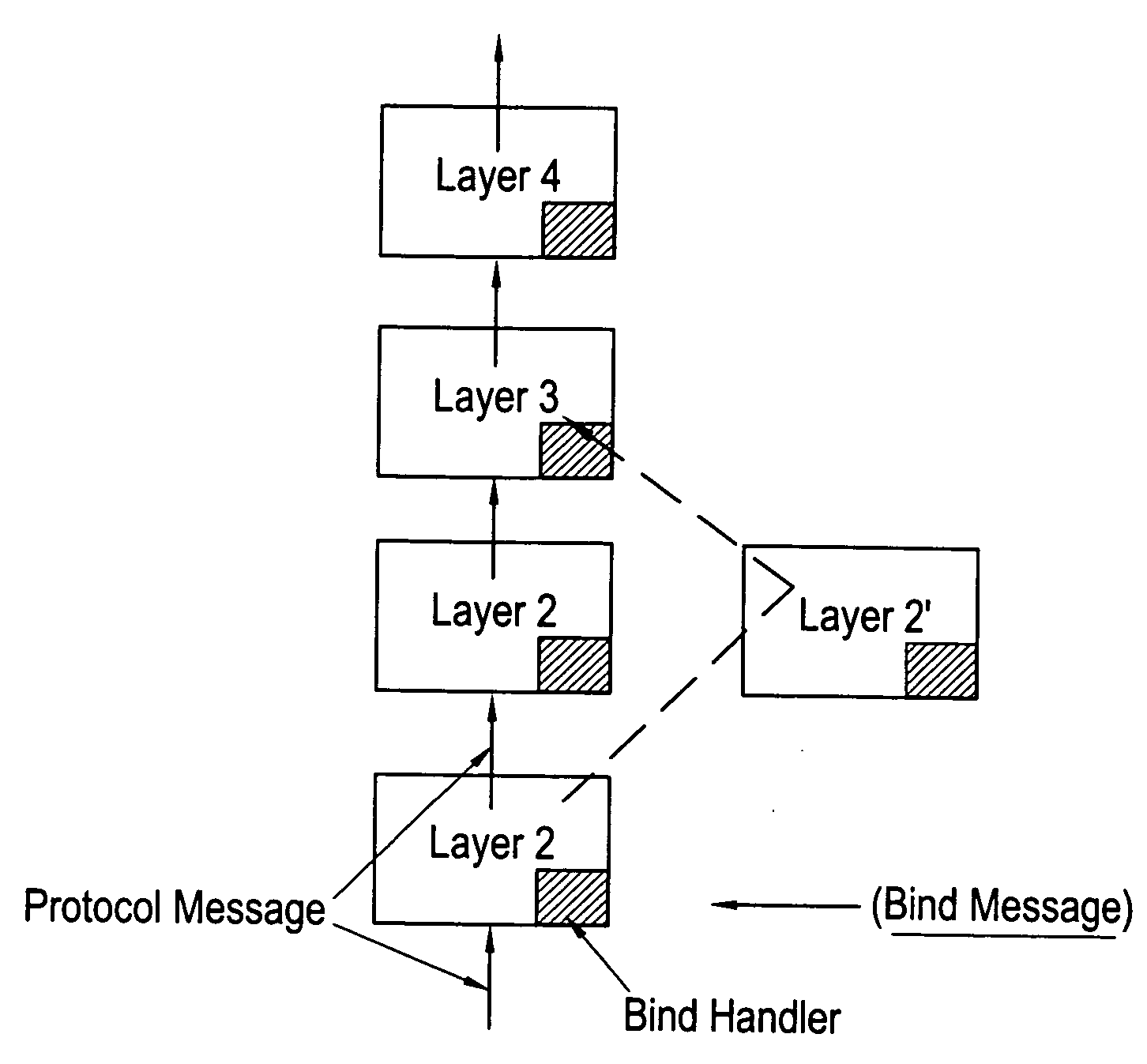Flexible protocol stack
a protocol stack and flexible technology, applied in the field of protocol stacks, can solve the problems of unencrypted packets, optimisation of execution environment, and approaches that do not consider the use of multiple execution environments to implement protocol stack arrangements,
- Summary
- Abstract
- Description
- Claims
- Application Information
AI Technical Summary
Benefits of technology
Problems solved by technology
Method used
Image
Examples
Embodiment Construction
[0192]FIG. 1a illustrates a communications protocol stack which will be familiar to those skilled in the art. The protocol stack comprises a number of software or protocol layers L1-L7 through which signals or protocol messages are processed. For example the application (L7) may be a web browser or a controller for a GSM voice call, the signals and messages generated by the application (L7) being processed down through the lower layers L1-L6 in order to communicate with another application across some physical link such as radiowaves, copper wire or optical cable for example.
[0193]FIG. 1b shows a simplified example of one of the communications stack layers. The actual details of how each layer works will depend on the particular protocol used. The layer receives a packet such as part of a voice call or web page. The layer is a software process performing a series of predetermined steps (protocol) on received packets. The first step performs a check sum calculation and rejects the p...
PUM
 Login to View More
Login to View More Abstract
Description
Claims
Application Information
 Login to View More
Login to View More - R&D
- Intellectual Property
- Life Sciences
- Materials
- Tech Scout
- Unparalleled Data Quality
- Higher Quality Content
- 60% Fewer Hallucinations
Browse by: Latest US Patents, China's latest patents, Technical Efficacy Thesaurus, Application Domain, Technology Topic, Popular Technical Reports.
© 2025 PatSnap. All rights reserved.Legal|Privacy policy|Modern Slavery Act Transparency Statement|Sitemap|About US| Contact US: help@patsnap.com



